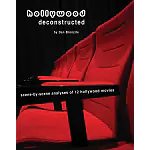Tag: star wars
The Selfless Hero
When we think of a hero in a movie we immediately assume we are talking about the central character otherwise known as the Protagonist, but many stories conceal a…
Character Arcs are the Foundation of an Engaging Story
So what is a character arc, you ask? Sounds complicated. Well, it doesn’t have to be, although a complicated character arc may be just what your screenplay needs. A…



